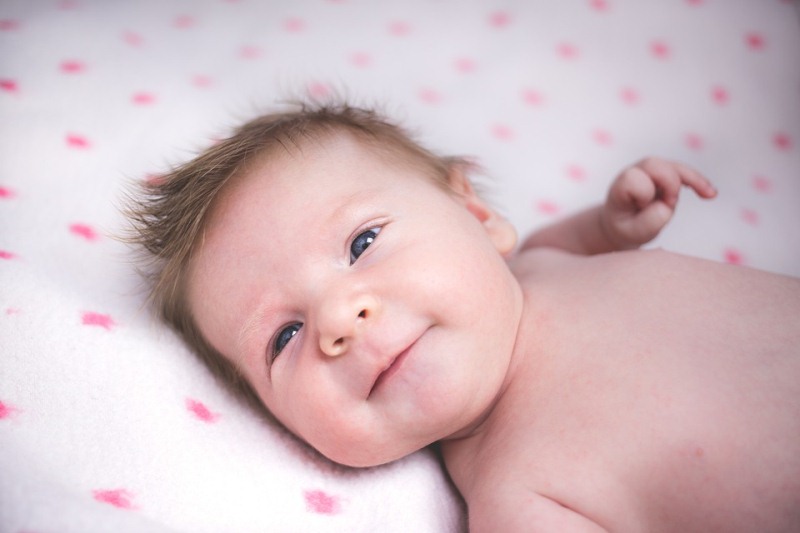How to care your baby’s eyes? A few important points to note
A simple cold or fever of the kid is enough to deprive the sleep of mother. If it’s some discomfort to his eyes, what to say more! If certain discomforts are neglected or not properly cared of, it can also lead him to the world of darkness, at least in a few cases. Precaution is always better than care. So let us take care of these important points to avoid complications in future. Development of human eye starts at feotus stage. Read more to know.
First sight of your baby

Soon after he is born, he opens his little eyes. But what does he see? He is closely watching his mother and reading her emotions? In truth, a newborn has only 1/6th sight of a normal person. If light directly falls to his eyes it causes discomforts to him. Slowly his sensitive eyes learn to resist light, and it takes almost three weeks. After 4 weeks, he learns to look at mother’s face directly and smiles.
It’s a common procedure to hang colourful toys with sound in the handle of his cradle. Never see it as a simple thing. It helps to understand sight problems of kids earlier. You can check if he moves his eyes in accordance to the movement of toys. Normally dark and bright shades attract him easily. So choose some bright coloured toys for him. Let his toys be colourful.
Why babies laugh while playing hide & seek?
The easy method to understand his eye sight is of course, eye movement. After 2 or 3 weeks of his birth, he learns more things through visuals. If you show something, his eyes catch them easily. Then he changes his attention to somewhere else. But after 3 or 4 months, he completely points his eyes to objects. After 6 months he realizes the presence of an object, even if hidden from his direct view. That’s why he laughs while playing hide & seek games at an age of 6 or 7 months. Till 9 months, his whole world and concentration revolves around his mother. After that he starts categorizing and identifying things.
Common eye disorders in babies that can be detected earlier
Squint eye, glaucoma, cataract, retinopathy of prematurity, amblyopia etc are some of the common eye diseases seen in infants. And here is a small description of each.
Squint eye – It’s the inability of eyes to use them both in the same direction. One eye may be turn in or out or may occur due to an incorrect balance of the muscles that move the eye. It can occur in two types – one eye is permanently turned in or out position, or occurrence of squint eye at certain occasions only. Children with squint at a young age should be treated immediately to avoid a permanent decrease in vision. Such kids have more chances to develop the condition of amblyopia in future. Squint eye may be genetically passed to next generations, or it can occur due to weak eye muscles. If treatment is started at early phase, squint eye can be corrected through operation.
Eye cataract – It’s only a myth that cataract is a condition of old people only. Though in very rare cases, cataract is seen in newborn infants too, that can affect one eye or both. It normally happens when mother is affected with measles, chicken pox or toxoplasmosis during gestation period. It can also happen due to genetic disorders or malnutrition. Factors for the development of eye sight are needed only after child’s birth, and for the same reason, if detected earlier it can be resolved. A thin layer may appear on his iris – that’s the first symptom, and it can be corrected through painless operation using operating microscope.
Glaucoma – Soon after child’s birth, his eyes are comparatively larger and exert more pressure as well. If his eyes are hypersensitive to light and shed tears continuously, there are chances of this disorder. It mainly occurs due to genetic disorders and operation is the only solution. Give him effective treatment as early as possible.
Retinopathy of prematurity – This condition is seen in prematurely born babies, with less than 1.5 kg body weight. As symptoms are not easily visible, it’s difficult to detect this condition. Incubator is usually provided for prematurely born babies, which has higher quantity of oxygen. This could also be one reason. So it’s advisable to have a thorough checkup of his eye sight. Laser treatment and operation are used to cure this disease.
Overflowing eyes – In some cases, baby’s eyes overflow with tears continuously without any reason. It mainly occurs due to the block of the canal which connects eyes and nose. This path opens automatically soon after child’s birth, and if it doesn’t happen, such a condition may occur. When path is blocked, tears flow through eyes only. Gently massage the area beneath the eyes and on the side of nose to opposite direction, to open the block. It’s known as lacrimal therapy in medical terms. If the defect is not corrected by this therapy, you need to seek doctor’s help. He may use a needle to open the path. Yet if the defect is not rectified, operation may be needed.
Amblyopia – This eye disorder is seen in a few infants. If one of the eyes has some defect, when two images of objects reach brain, the brain dumps the bad visuals. Slowly brain develops a habit to less rely on that particular defective eye. The functionality of that eye also slowly degrades, resulting in this defect. Messages from eyes to brain are conducted through optical nerves. The connection between eyes, optical nerves and brain fully expands and develops when the child reaches 9 years of age. So there are chances for this disease till he reaches 9.
Let us closely observe his eye sight
Infants can’t convey their problems through words. But the keen observation of his mother can easily detect many of his problems. Usually with the age of 3 months, the baby’s eyes start slowly moving with objects. If your baby is not doing so, it is to be doubted if he can see objects without any issues. Similarly if your kid is not looking at your face and smiling, then there are more chances for eye defects. Closely observe if black patches are present inside his eyes. You can also detect squint eye through close observation. If he glares at brightness or frequently touches the edge of eye near his nose, there are chances for eye defects.
Even if you have silly doubts regarding his eye sight, never detect it. In most cases, defects if treated earlier can completely cure the disease. Otherwise such complications may be carried forward to next level as he grows up. Should we wait for that? Should our neglectance take our kid’s sight? Just think over it.
Image source: Pixabay
Also read a few more articles on parenting. Click on the images in the gallery to read















Recent Comments